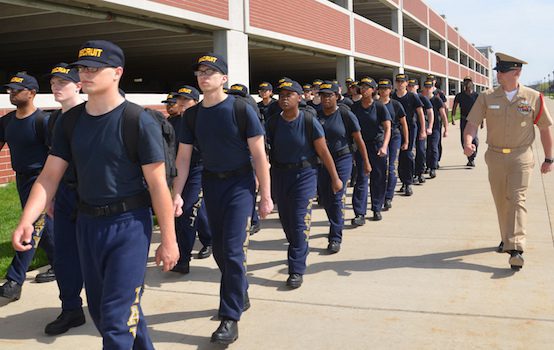 |
| U.S. Navy/Lt. Liza Swart/Flickr |
The services are facing a dwindling pool of largely obese, uneducated delinquents. Why?
It’s not a secret: a surefire way for a presidential contender to get votes is to promise to increase the defense budget. It has worked for nearly every president since John Kennedy—and it worked for Donald Trump. Back in September 2016, candidate Trump promised he would not only increase the Pentagon’s budget, he would add more soldiers, sailors, and airmen (and women) to the military’s ranks.
In April, Trump followed up on his pledge by signing a defense bill that not only ended the spending caps, but called for an increase in the military’s size in 2018 by adding 20,000 new personnel—including 7,500 more soldiers, 4,000 more sailors, 1,000 new Marines, and 4,100 more airmen.
Senior military officers, and particularly Army Chief of Staff Mark Milley, celebrated the increase. Since becoming his service’s senior officer, Milley has argued that to meet its obligations, the Army will need 540,000 soldiers in its ranks by 2022, an increase of some 70,000 soldiers over four years. “It is not some arbitrary number,” Milley told a gathering of Army veterans back in August. “We have done the analysis. We need to be bigger, and we need to be stronger and more capable.”
Milley’s goal meant that the Army not only needed to find 17,500 new soldiers every year, it needed to find replacements for those who retire or leave the service every year—about 20 percent of the force. So it is that the Army set its 2018 recruiting goal at 80,000 soldiers. Initially, at least, Milley’s target seemed modest, reachable. It wasn’t.Read the rest of the story HERE,
If you like what you see, please "Like" us on Facebook either here or here. Please follow us on Twitter here.


No comments:
Post a Comment